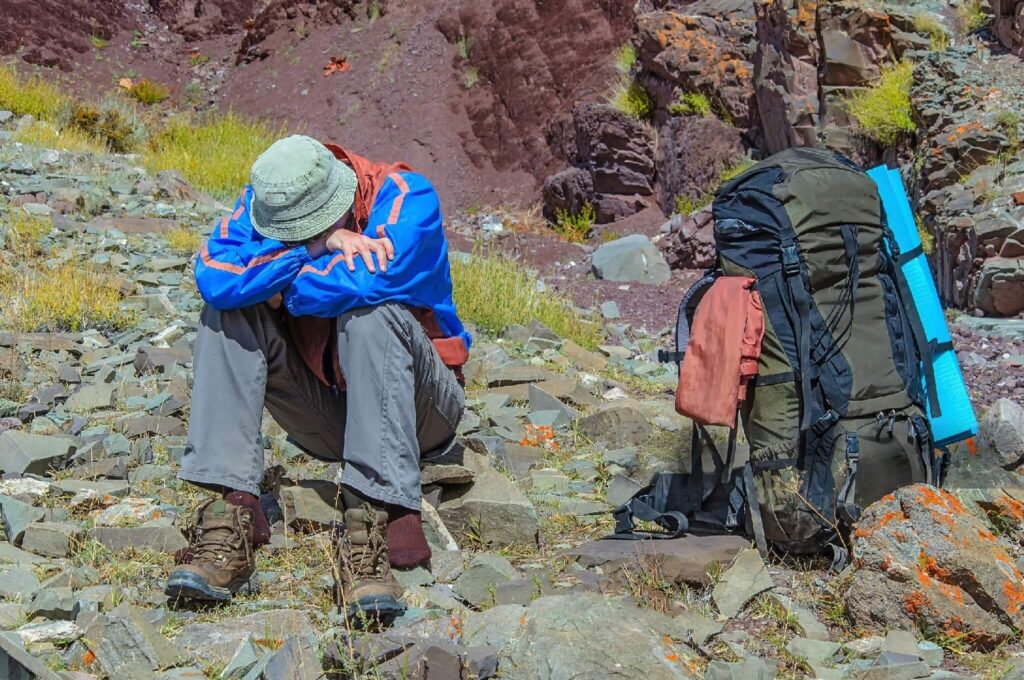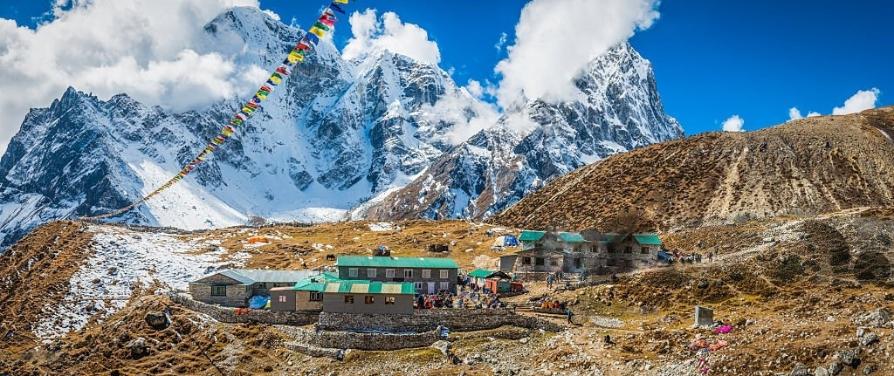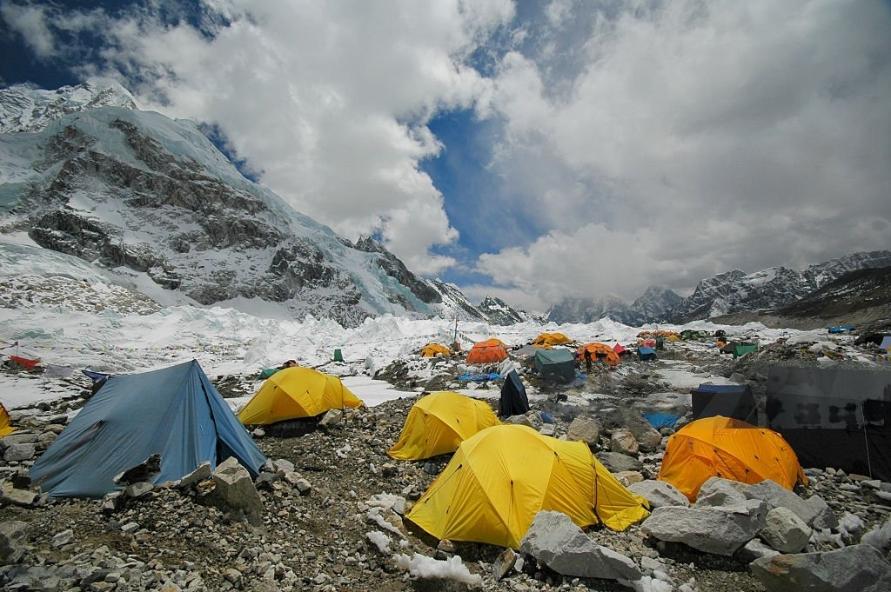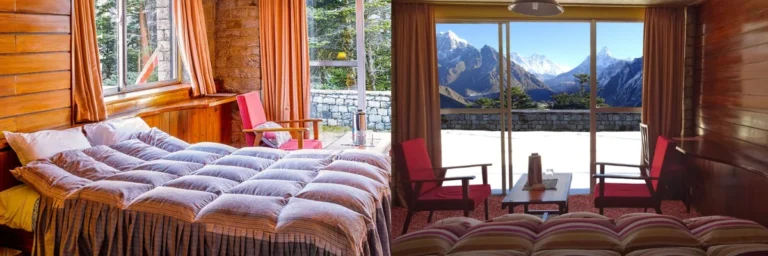Introduction to Altitude Sickness at Everest Base Camp
Altitude sickness is a serious concern for trekkers at Everest Base Camp. Located at an extreme elevation, Everest Base Camp poses unique challenges due to its reduced oxygen levels and high altitude. As trekkers trek to higher elevations, they may experience symptoms such as headaches, nausea, dizziness, and fatigue. It is important to have a comprehensive survival guide to navigate through altitude sickness during the trek.

In this article, we will provide you with valuable information and practical tips to deal with altitude sickness at Everest Base Camp. Our survival guide will cover prevention strategies, recognition of symptoms, and appropriate actions to take. By understanding the risks and implementing the right techniques, you can ensure a safe and successful trek.
Table of Contents
Importance of Proper Acclimatization
To prevent altitude sickness, it is important to acclimatize properly. This involves gradually ascending at a slow pace and taking rest days to allow your body to adjust to the high altitude. We will also discuss acclimatization techniques like the “climb high, sleep low” principle and maintaining a balanced diet. Additionally, we will address the use of medications for acclimatization but emphasize the necessity of consulting with a healthcare professional before taking any medication.
Recognizing Symptoms for Early Intervention
Recognizing the symptoms of altitude sickness is important for early intervention. We will educate you about common altitude-related illnesses like acute mountain sickness (AMS) and high-altitude pulmonary edema (HAPE). It is important not to push through any symptoms in order to reach your destination. Your health should always be a top priority.
Learning from Others’ Experiences
Throughout this article, we will share real-life accounts from trekkers who have encountered altitude sickness at Everest Base Camp. By learning from their experiences and challenges, you can make informed decisions about your own well-being.
Join us on this journey as we explore the depths of altitude sickness and survival at Everest Base Camp. Together, we will ensure your safety, enjoyment, and success in this amazing adventure.

Understanding Altitude Sickness at Everest Base Camp
Altitude sickness, also known as acute mountain sickness (AMS), occurs when you ascend to high elevations where the air pressure is lower. This leads to reduced oxygen levels in your body, which can cause various symptoms, including:
- Headache
- Nausea
- Dizziness
- Fatigue
- Shortness of breath
It’s important to recognize these signs as early as possible to prevent the condition from getting worse.
The Role of Acclimatization
Acclimatization plays a crucial role in reducing the risk of altitude sickness. It involves allowing your body time to adjust to the changing oxygen levels, which can significantly decrease the likelihood of experiencing severe symptoms.
Tips for Preventing Altitude Sickness
Here are some practical tips that can help you prevent altitude sickness:
- Maintain a slow ascent rate: Avoid ascending too quickly, and give your body enough time to adapt to the higher altitude.
- Take regular rest days: During your trek, schedule rest days where you stay at the same elevation or even descend slightly. This allows your body to recover and adjust.
- Stay hydrated: Drink plenty of water throughout your trek to stay properly hydrated. Dehydration can increase the risk of altitude sickness.
Using Medicines for Altitude Sickness
In some cases, trekkers may consider using medication to aid acclimatization. However, it’s important to highlight the need for medical consultation before taking any medication.
Medication should not be seen as a replacement for proper acclimatization practices but rather as an additional measure under medical guidance. Individual health conditions and potential side effects must be carefully considered before using this medication.

Risks of Altitude Sickness at Everest Base Camp
Altitude sickness poses a significant risk to trekkers at Everest Base Camp due to its extreme elevation. The reduced oxygen levels and high altitude create a challenging environment for the human body to function optimally, increasing the likelihood of altitude-related illnesses. The risks associated with altitude sickness at Everest Base Camp include:
1. Extreme Elevation
Everest Base Camp is situated at an elevation of approximately 17,600 feet (5,364 meters) above sea level, making it one of the highest trekking destinations in the world. The rapid gain in altitude as trekkers ascend from lower regions significantly elevates the risk of experiencing symptoms related to altitude sickness.
2. Manifestation of Altitude Sickness
Altitude sickness presents in three primary stages: mild, moderate, and severe. Mild symptoms typically include headaches, nausea, fatigue, and dizziness. As the condition progresses, moderate symptoms such as vomiting, persistent coughing, and shortness of breath can occur. Severe altitude sickness can lead to life-threatening conditions like high-altitude pulmonary edema (HAPE) and high-altitude cerebral edema (HACE), which require immediate medical attention.
Understanding these risks is very important for trekkers preparing to go on the challenging journey to Everest Base Camp. It underscores the importance of implementing effective acclimatization strategies and being vigilant about recognizing and responding to symptoms of altitude sickness throughout the trek.
Acclimatization Strategies during the Everest Base Camp Trek

Proper acclimatization is important for a successful and safe trek to Everest Base Camp. Here are some key strategies to follow:
Understand the Importance of Proper Acclimatization
Acclimatization is the process of allowing your body to adapt to higher altitudes gradually. It helps reduce the risk of altitude sickness and ensures a more enjoyable trekking experience.
Follow These Acclimatization Techniques
- Take advantage of scheduled rest days during your trek to allow your body time to adjust to the increasing altitude. Resting at lower elevations on these days helps your body recover and adapt.
- Practice the “climb high, sleep low” principle by ascending to higher altitudes during the day and then descending to sleep at a lower elevation. This technique aids in acclimatization by exposing your body to higher altitudes without spending prolonged periods there.
Support Your Body’s Adjustment with Healthy Habits
- Maintain a balanced diet consisting of carbohydrates, proteins, and healthy fats to provide the necessary energy.
- Avoid excessive alcohol consumption, as it can dehydrate you and interfere with your body’s ability to acclimatize effectively.
By following these acclimatization strategies, you give your body the best chance to adjust gradually to higher altitudes and reduce the risk of altitude sickness. Remember that everyone acclimatizes at their own pace, so listen to your body and take it slow if needed.

Recognizing and Responding to Altitude Sickness Symptoms
Altitude sickness, also known as acute mountain sickness (AMS), is a common concern for trekkers at Everest Base Camp trek. It is crucial to recognize the early signs of altitude-related illnesses to ensure prompt action and prevent serious complications.
Important Points to Keep in Mind
Know the Symptoms
Familiarize yourself with the common symptoms of altitude sickness, including:
- Headache
- Dizziness
- Nausea
- Loss of appetite
- Fatigue
- Difficulty sleeping
These symptoms may appear within hours or days of ascending to higher altitudes.
Take the symptoms seriously.
If you experience any symptoms of altitude sickness, it’s essential not to ignore them or push through for the sake of reaching your destination. Altitude sickness can progress rapidly and can be life-threatening if left untreated.
Practice Self-Awareness
Pay attention to how you feel throughout your trek and listen to your body. Even mild symptoms should be taken seriously and may indicate that you need to rest or descend to a lower elevation.
Consult Your Guide
Your experienced trekking guide will be familiar with the symptoms of altitude sickness and can provide valuable advice. Don’t hesitate to share any discomfort or concerns with them.
Stay Informed
Before heading on your Everest Base Camp trek, educate yourself about altitude sickness and its potential risks. This knowledge will enable you to recognize symptoms promptly and make informed decisions about your health.
Remember, prevention is key when it comes to altitude sickness. Proper acclimatization strategies, such as gradual ascent rates, scheduled rest days, and the “climb high, sleep low” principles discussed earlier in this guide, significantly reduce the risk of developing altitude-related illnesses. By recognizing the symptoms and responding appropriately, you can ensure a safe and enjoyable trekking experience at Everest Base Camp trek.
Dealing with Altitude Sickness: Our Trekkers’ Personal Experiences and Recommendations
Real-life Accounts
One trekker, Sarah, from the United States, experienced severe headaches and shortness of breath at Everest Base Camp. Despite her determination to reach the summit, she wisely decided to descend to lower altitudes when her symptoms worsened.
Another trekker, Mark from London, initially ignored his fatigue and loss of appetite, but we at Himalayan Trekking and Tours eventually recognized the signs of altitude sickness and took the necessary rest days.
Informed Decisions
These personal experiences emphasize the importance of recognizing early symptoms and making informed decisions for one’s health. Trekkers should prioritize their well-being over reaching their destination and listen to their bodies’ limits.
Additional Advice
It is important to heed the warnings from fellow trekkers’ experiences. Listening to your body, acknowledging symptoms, and taking appropriate actions are vital for dealing with altitude sickness effectively.
Conclusion
When it comes to altitude sickness at Everest Base Camp, having a comprehensive survival guide is crucial. But remember, your health should always come first, even if it means not reaching the summit or the base camp. After all, this trek is about exploring yourself and embracing the thrill of adventure.
You may also like:
Send an Enquiry
Error: Contact form not found.
© 2026 - Himalayan Trekking and Tours (P) Ltd. All Rights Reserved.




